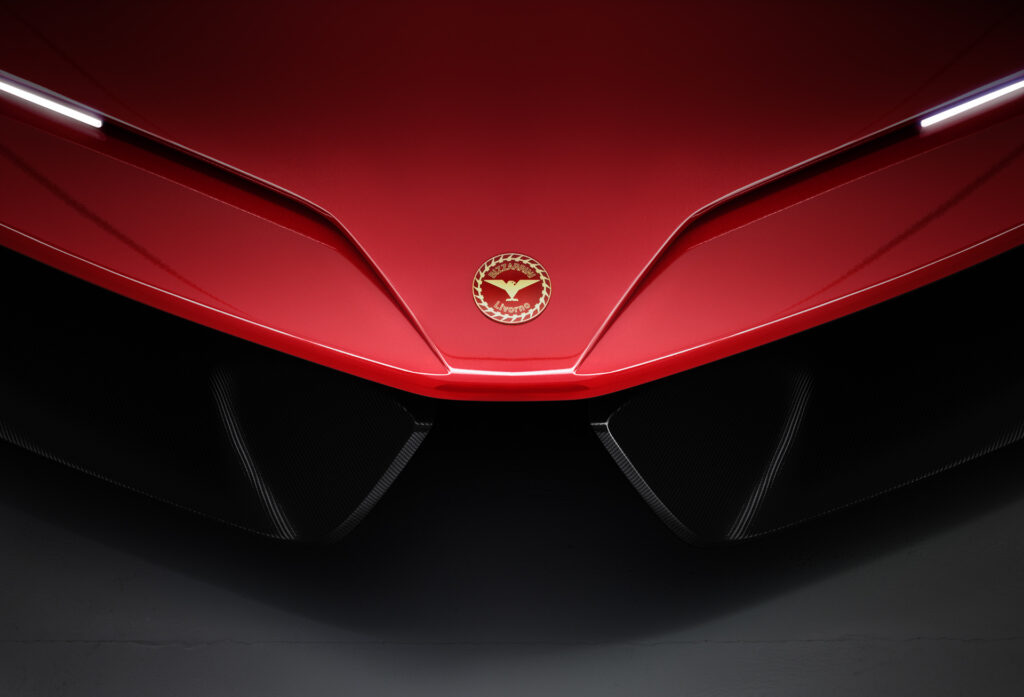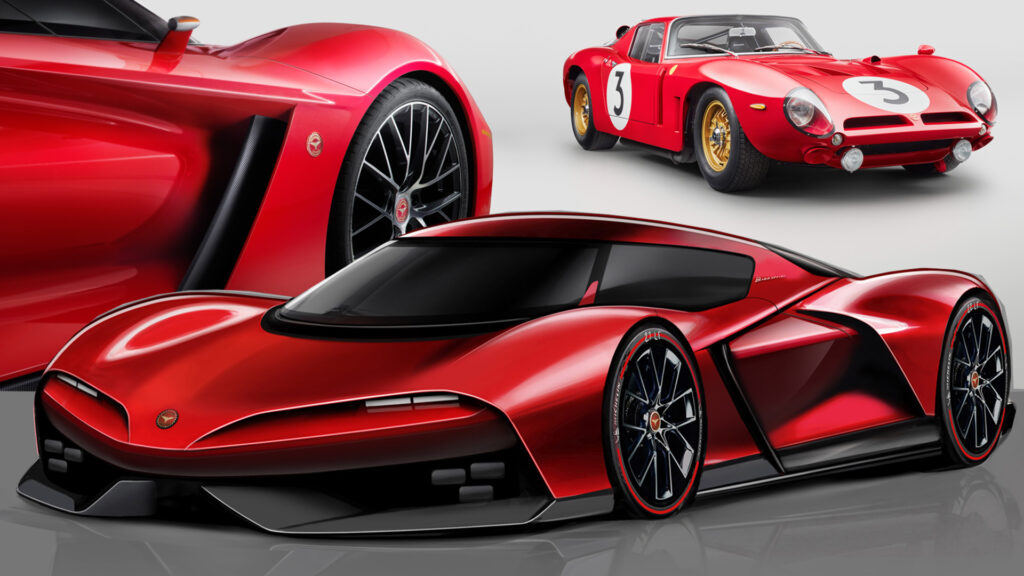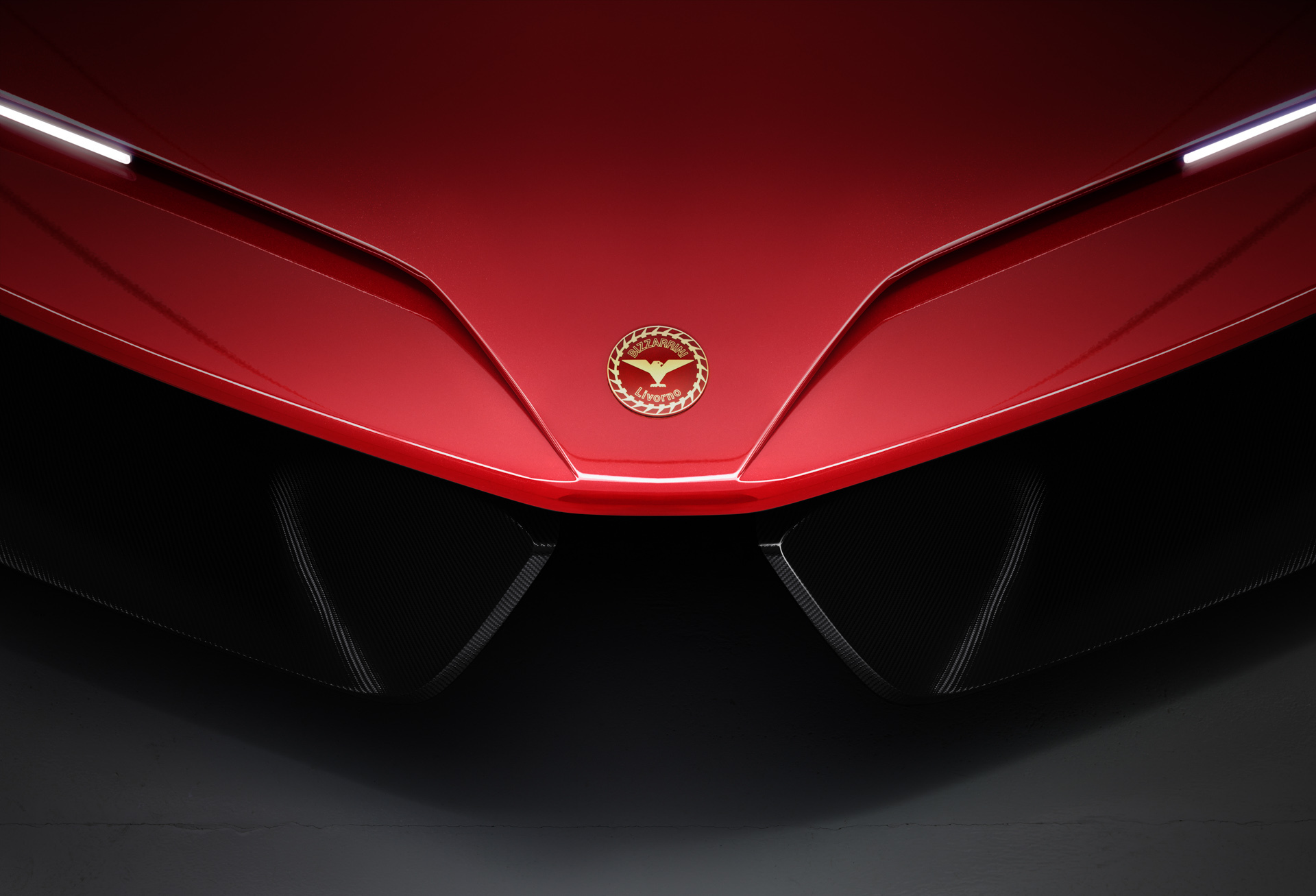The reborn Bizzarrini company is following up last year’s 5300 GT Revival with an all-new V12 hypercar.
It’s called Giotto after Giotto Bizzarrini, the trailblazing engineer who helped create cars like the Ferrari 250 GT SWB and 250 GTO, and designed Lamborghini’s iconic V12 engine before setting up a firm bearing his own name. But while the 5300 GT Revival was a close copy of the original company’s 1960s racer designed to remind people why the Bizzarrini name matters, its successor wants to be compared with modern hypercars like the Pagani Utopia.
There is, however, one major link to the old days. The new car’s carbon bodywork was designed by Giorgietto Giugiaro, who worked together with his son, Fabrizio. Giugiaro had a major hand in the look of the 5300 GT while working as a young man at Bertone 60 years ago.
Giugiaro claims he has “created something that is both recognizably Bizzarrini and totally relevant for an entirely new era of this cherished Italian brand.” Anyone unfamiliar with the connection would think it’s simply an athletic-looking modern hypercar, but those horizontal nostrils containing a pair of LED headlights are an obvious nod to its 1960s ancestor, and the press release also references a wraparound rear screen and tapering, teardrop tail not clearly shown in the handful of accompanying rendered images.
Related: Ultra Rare Bizzarrini 5300 GT Corsa Revival Visits The Top Gear Test Track

Bizzarrini says it will release more complete technical information later in the year, but does confirm that the Giotto will feature a naturally-aspirated V12 engine that complies with emissions regulations and is mated to an eight-speed dual-clutch transmission. There’s no work on whether the car will feature any kind of hybrid assistance to help it meet emissions targets. Development of the drivetrain and the rest of the car’s engineering will be overseen by Bizzarrini’s Chief Technical Officer, Chris Porritt, who has served time at Aston Martin, Tesla and Rimac.
“We have a very clear vision for the Giotto, defined ultimately by how it makes a driver feel,” Porritt says, adding that his team is “choosing not to chase acceleration times or lap records, but to develop a car that appeals to those experienced drivers seeking purity, authenticity and rarity. This is vocal and emotive, it’s mechanical and it’s tactile.”
Testing of prototypes doesn’t start until 2024, but we’ll hear more about the Giotto later this year, presumably including how much it costs (we’re guessing upwards of $2.5 million, in line with Pagani’s Utopia prices) and how many the firm plans to build. Whatever that number is, it’s going to be built in significantly higher quantities than the 24 examples of the 5300 GT Revival that Bizzarini built to kickstart the company’s activities before it got down to the serious business of selling a modern hypercar.
“The 5300 GT Corsa Revival was an introduction to the world of the genius of Bizzarrini but the Giotto is the centerpiece of our future as an exclusive supercar manufacturer,” said the firm’s CEO, Ian Fenton. “It forms the heart of a 10-year strategy that will see additional variants and more Revival models from Bizzarrini while also firmly placing this historic and revered name among the very best performance brands in the world.”











